This classic children’s science project is easy to set up and amazing to watch – try the colour changing flowers experiment.
Colour changing flowers experiment
Want to see flowers change colour right before your eyes? It looks like magic but is full of the wonder of science! To try this simple science experiment you will need
:: white flowers – chrysanthemums or carnations are good
:: small vases or cups
:: water
:: food colouring
:: craft knife (optional)
:: stopwatch/clock (optional)
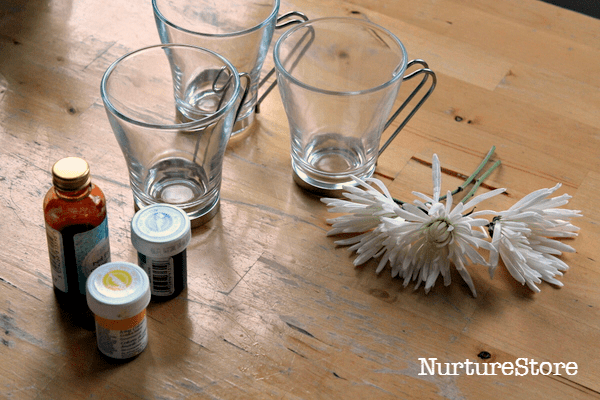
This page contains affiliate links from which we earn commission.
As an Amazon Associate I earn from qualifying purchases.
To begin your colour changing experiment you’ll need some water mixed with food colouring. Our favourite food colourings, which we use for art and sensory play too, are Wilton Icing Colour Gels. We did also try a food colouring from our local store, but the colour was just too weak. The Wilton colours are much better – just put a tiny amount of the colour in the water and give it a stir.
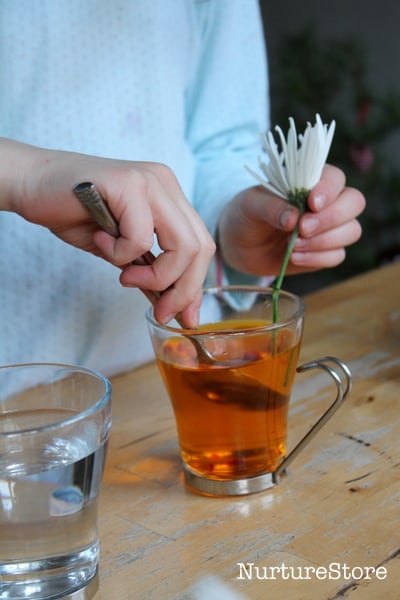
Set up a few different vases so you can try several different colours. Place a flower stem in each vase and watch and wait to see what happens.
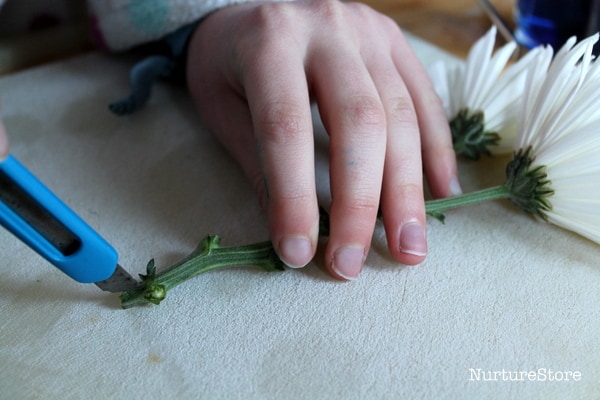
If you’d like to try a colour mixing experiment, use a craft knife to very carefully slice one of your flower stalks in half, cutting just part way up the stalk so the top remains intact. Then place each section of the cut stalk into a different vase of coloured water.
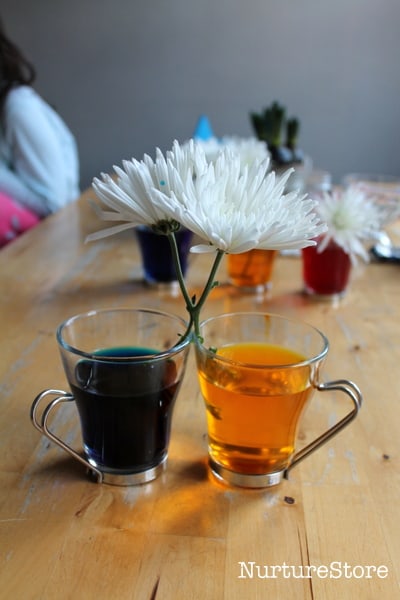
Make some predictions
Science experiments with children should encourage them to think and question. Talk about what might happen, and see if they have any suggestions to explain what will happen in their experiment. All ideas are valid, so encourage suggestions, even if you know they are wrong, and even if they seem a little too extraordinary. I like to note down the children’s ideas and questions for them, so they are free to talk and ponder and hypothesize, and then we can come back to their ideas at the end of the experiment to see if they were correct and if we need to do more research to find answers.
Some prompts to use start the discussion are:
:: What do you think is going to happen to the flowers in the coloured water?
:: How long do you think it will take before you notice any changes?
:: What will happen to the flowers that are split between two different colours?
:: What do you think will cause the change you are expecting to see?
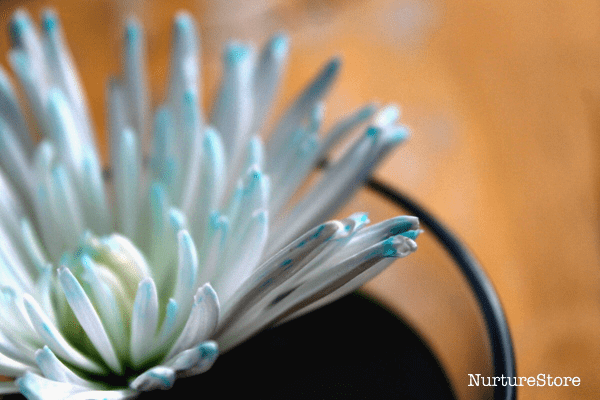
Then it’s time to observe your flowers and note any changes. You might use a stopwatch or clock to time any changes, and use a camera or make sketches to record what you see.
Our colour change happened within a few hours. Can you see how the flowers, especially the tips, are changing colour? Beautiful and interesting! What’s going on? How is the change happening?
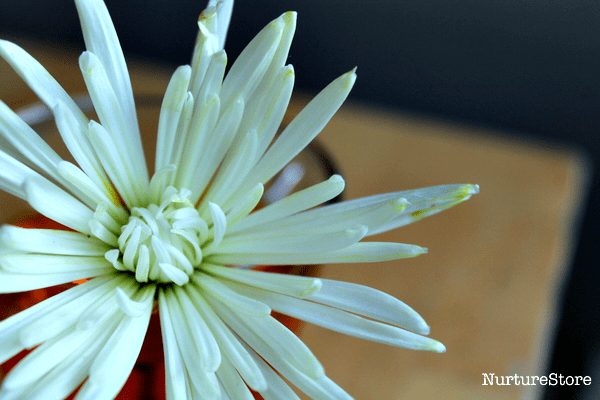
And can you see what happened to the flowers that were in both blue and yellow water? It’s a little difficult to see in the photograph, but can you make out the blue and yellow colours on the right and left, and see how they have blended to make green petals in the centre?

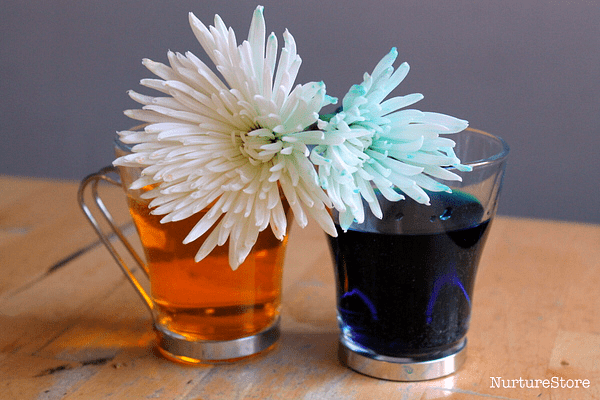
How the colour changing flowers experiment works
The flowers are drinking the coloured water from the vase. Plants take up water through roots and, in this experiment, through their stalks using tubes called xylem. The water passes up through the stalk to the top of the plant, and into the petals. Any colour that is present in the water transfers to the plant too, which is why you can see the colour of your flowers changing.
You can see a more detailed picture of how the xylem work here.
Take a look at this interactive resource to explore transpiration.
Watch this video to learn more about transpiration.
Extend the colour changing experiment
:: Research how other plants get the water they need. You could consider cacti and tillandsias.
:: Consider how water pollution can affect plants.
:: Vary the experiment by placing a flower in one colour for a day, and then placing it in another colour. Does any colour changing occur? What about splitting the stem and placing one half in coloured water and one half in plain water?
:: Is there any way you can speed up the colour changing? (What would happen if you placed the flowers on a hot sunny window ledge?)


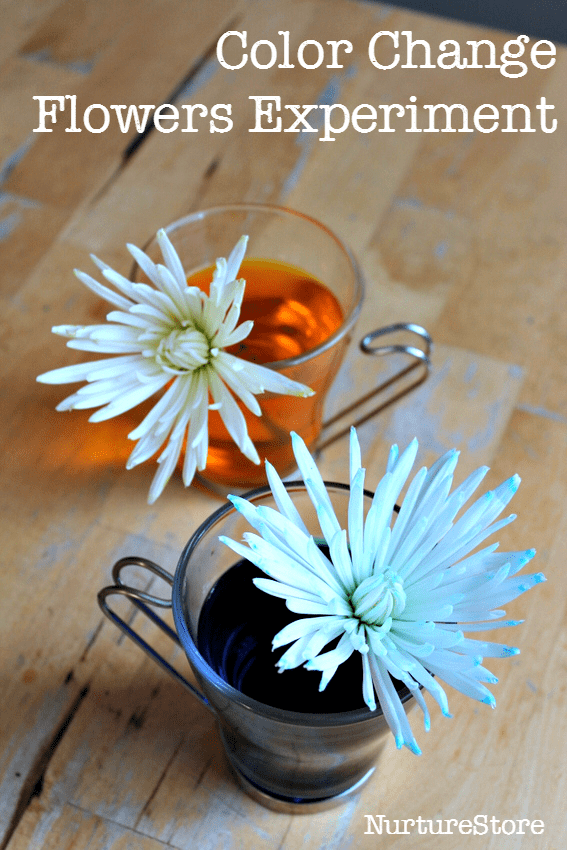
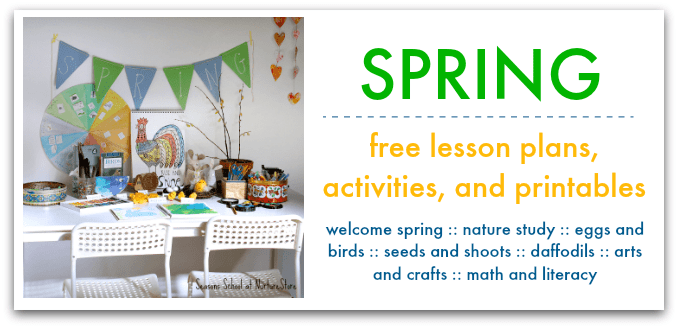


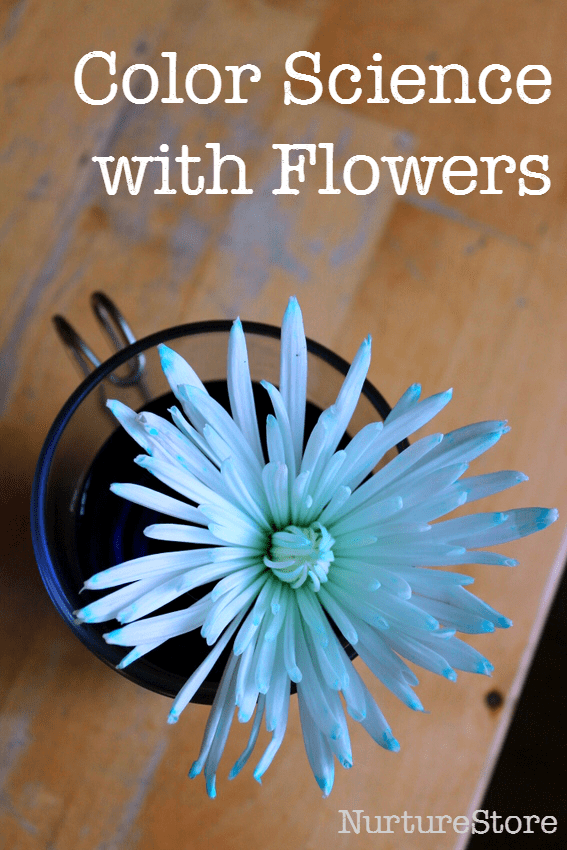
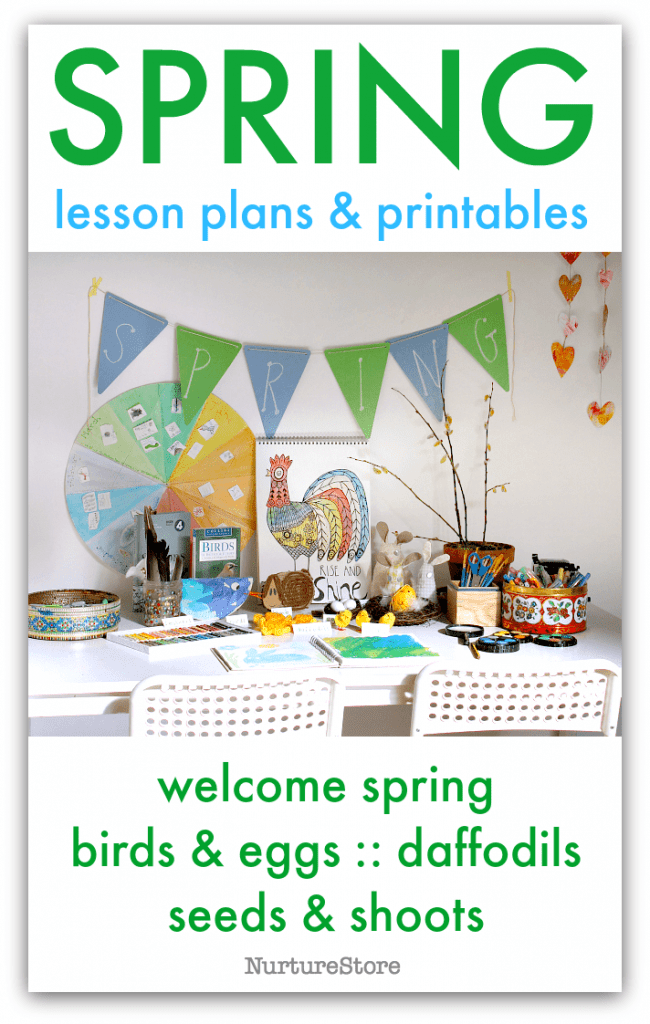
I was wondering if there is any way to speed this up? My mother was asking me to research as she would like to do this as part of her wedding.
You’d have to experiment, Charlotte. Perhaps placing the flowers somewhere hot so they draw up water more quickly?